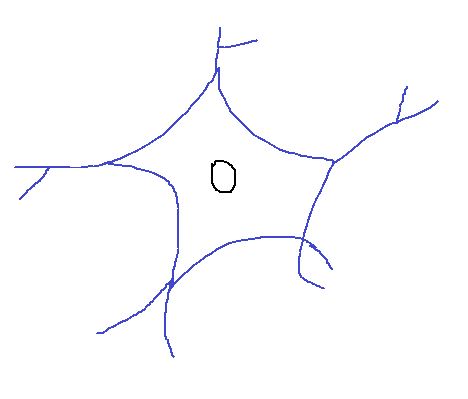
Nelson Science Perspectives 10
1st Edition
ISBN: 9780176355289
Textbook solutions
All Solutions
Section 3-10: The Nervous System
Exercise 1
Step 1
1 of 2
The nervous system is composed of the brain, the spinal cord and a detailed network of nerves to different parts of the body. The function of the nervous system is to transmit signals between the brain, the spinal cord and the nerves.
Result
2 of 2
The nervous system is composed of the brain, the spinal cord and a detailed network of nerves to different parts of the body.
Exercise 2
Step 1
1 of 2
Structure of a neuron: The black circle in the middle represents the nucleus while the blue boundary and the branches represent its branching ends:
Result
2 of 2
Click to see diagram.
Exercise 3
Step 1
1 of 1
The eyes see the oncoming ball and communicate with the brain to hit the ball with the baseball bat. The brain sends a signal to the arms and they are raised to target the ball with the bat. As soon as the arms receive the hit of the ball colliding with the bat, a signal is sent to the brain and the brain resend a signal to the arms to hit it. All of this happens in fraction of seconds and therefore appear to be happening instantaneously.
Exercise 4
Step 1
1 of 2
The nervous system coordinates activities in the body by receiving signals from them. For example, an empty stomach sends the signal to the brain that it wants to be filled, as a result of which the feeling of hunger begins and the hands reach out to eat something. Similarly a filled bladder can communicate with the brain to tell the brain about its situation and the body reacts by doing the physical act of excretion. Also on a hot day, the sensory receptors on the skin can tell the brain that the body needs to cool down as a result of which the body starts sweating.
Result
2 of 2
Click to see answers.
Exercise 5
Step 1
1 of 2
Sensory receptors are the receivers of external signals that a body needs to receive in order to survive. They are specialized cells that are present on different parts of the body and may differ in their operations. For example the eyes have receptors that detect light while the skin have receptors that detect touch, temperature and wetness on the skin.
Result
2 of 2
Sensory receptors are the receivers of external signals that a body needs to receive in order to survive.
Exercise 6
Step 1
1 of 2
CT scan are MRI is used to diagnose head and other injuries. These technologies give inside images of the injured area(s) and show if the affected area is mildly or severely damaged, and therefore an appropriate treatment can be started before the injury worsens.
Result
2 of 2
CT scan are MRI is used to diagnose head and other injuries.
Exercise 7
Step 1
1 of 2
If the eardrum is not damaged and yet the patient has lost hearing in one ear, then there is a definite possibility that the sensory receptors in the ear have been damaged, and therefore even though the eardrum is functioning properly, no sensory receptors are present to carry the information from the eardrum to the brain to be heard as sound.
Result
2 of 2
This indicates that the sensory receptors in the ear have been damaged.
unlock

